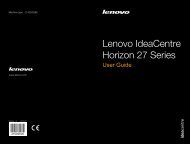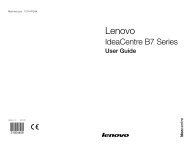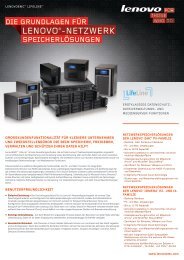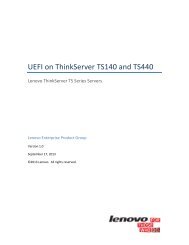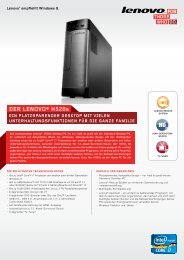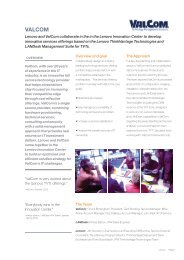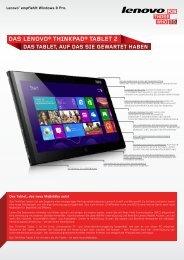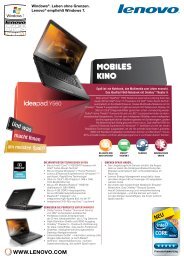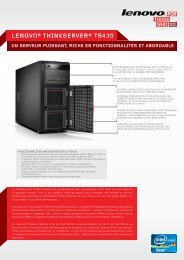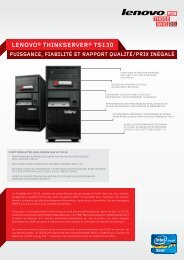Create successful ePaper yourself
Turn your PDF publications into a flip-book with our unique Google optimized e-Paper software.
3. Follow step 11 and step 12 above in “Setting a supervisor password” on page 94 to change your<br />
supervisor password.<br />
To remove the password, do the following:<br />
1. In the Enter Current Password field, type the current supervisor password.<br />
2. Leave the Enter New Password and Confirm New Password fields in blank.<br />
3. Follow step 11 and step 12 above in “Setting a supervisor password” on page 94 to remove your<br />
supervisor password.<br />
Hard disk security<br />
Your computer supports an enhanced security solution for solid state drive or hard disk drive. To protect<br />
passwords from unauthorized security attacks, several of the latest technologies and algorithms are<br />
integrated into UEFI BIOS and hardware design of ThinkPad notebooks.<br />
To maximize security, do the following:<br />
1. Set a power-on password as well as a hard disk password for your internal solid state drive or hard disk<br />
drive. Refer to the procedures in “Power-on password” on page 90 and “Hard disk passwords” on page<br />
91. For security, a longer password is recommended.<br />
2. To provide reliable security for UEFI BIOS, use the security chip and a security application with a Trusted<br />
Platform Module management feature. Refer to “Setting the security chip” on page 96.<br />
Note: Microsoft Windows 7 and Windows Vista support TPM management feature.<br />
3. If a “Disk Encryption hard disk drive and Encryption solid state drive” on page 96 is installed in your<br />
computer, be sure to protect the contents of your computer memory from unauthorized access by use<br />
of drive encryption software, such as Microsoft Windows BitLocker ® Drive Encryption in Windows 7 and<br />
Windows Vista. Refer to “Using Windows BitLocker Drive Encryption” on page 95.<br />
4. Before you dispose of, sell, or hand over your computer, make sure to delete data stored on it. Refer to<br />
“Notice on deleting data from your hard disk drive or solid state drive” on page 105.<br />
Notes: The following drive(s) can be protected by UEFI BIOS:<br />
• The hard disk drive built into your computer.<br />
Using Windows BitLocker Drive Encryption<br />
To help protect your computer from being subject to unauthorized access, be sure to use drive encryption<br />
software, such as Windows BitLocker Drive Encryption.<br />
Windows BitLocker Drive Encryption is an integral security feature of Windows 7 and Windows Vista. It is<br />
supported in Ultimate and Enterprise editions of Windows 7 and Windows Vista. It can help you protect the<br />
operating system and data stored in your computer data, even if your computer is lost or stolen. BitLocker<br />
works by encrypting all user and system files, including the swap and hibernation files.<br />
BitLocker uses a Trusted Platform Module to provide enhanced protection for your data and to ensure early<br />
boot component integrity. A compatible TPM is defined as a V1.2 TPM.<br />
To check the BitLocker status, do the following:<br />
• For Windows 7: Click Start ➙ Control Panel ➙ System and Security ➙ BitLocker Drive Encryption.<br />
• For Windows Vista: Click Start ➙ Control Panel ➙ Security ➙ BitLocker Drive Encryption.<br />
Chapter 4. Security 95



